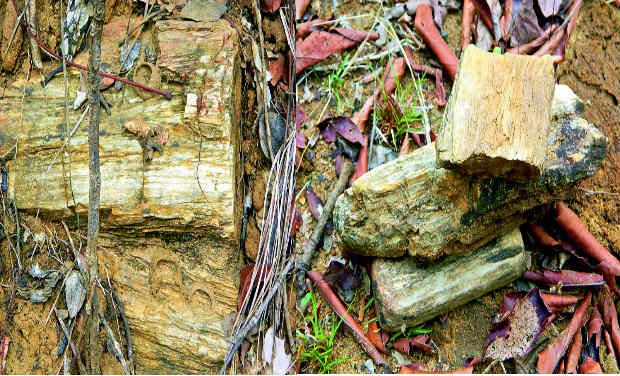
Warrangal:
The Eturunagaram wildlife sanctuary in Warangal is attracting the attention of geologists, botanists and paleo-botanists, after forest officials discovered the abundant presence of wood fossils dating back to 120-250 million years.
These are fossils in the exact replica of cut wood. They are found dotting the landscape all over Chityal, Chintaguda, Sarvai North and Sarvai South forest in Eturnagaram wildlife sanctuary, making a strong case for declaration of the area as a ‘geo-heritage site’.
Such is their number that almost all small rocks one comes across in the four ‘Forest Beats’ in Eturunagaram wildlife sanctuary turn out to be wood fossils, which are beautiful works of natural art in themselves.
There have been instances of a part of a large trunk of a tree being found in fossilised form at these places in the past, prompting experts to throng the place in large numbers to carry out research work.
Experts suggest that these wood fossils came about during the formation of Gondwana, a super continent comprising present day India, Antartica, Australia, South America and Africa as one whole.
They changed into fossils through a process of cell-by -cell replacement by silica, leading to its petrification, which is defined as the process of turning plant material into stone by infiltration with water carrying mineral particles without changing its original shape.
According to Dr R. Mallikarjuna Reddy, head of the Geology department, Kakatiya University, the Gondwana period between 120-250 million years ago in geological scale is much older than the Jurassic Age (60-120 million years), the age of the dinosaurs.
“The wood fossils site in Eturunagaram is even older than the one found at Tamil Nadu’s Tiruchirapalli, a declared natural heritage site in India, which dates back to the Cretaceous period (145 -65 million years). Hence, the site needs protection to save it for the next generation,” said Dr Mallikarjuna Reddy.
The fossil wood, found in Eturunagaram is said to belong to Glossopteris species of trees of the genus gymnosperm, which is now extinct.
The discovery of the Glossopteris species of trees in different continents, including India, Asia is said to be an important link to prove the continental drift theory, which otherwise explains the gradual movement and formation of continents around the world.
source: http://www.deccanchronicle.com / Deccan Chronicle / Home> News> Current Affairs / by Prabeer Sikdat / DC / June 26th, 2013